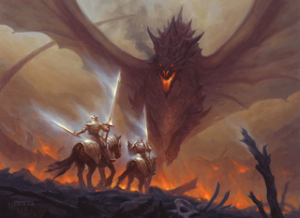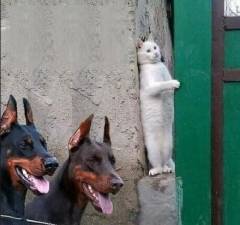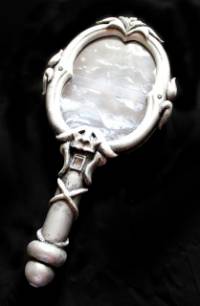Table of Contents
Ideal of Courage
“I put pen to paper - there is nought but courage in that.”
Jo.
The Ideal of Courage consists of the aspects of Hope and Despair. It deals with motivation, pain, danger and uncertainty - what drives the soul to great feats of heroism, or plunges us into the paralysis of existential horror. Such Muses favour the underdog and those who persevere to get what they want, while taking the time to dwell on our fears and how we might overcome them.
Muses of Courage have power over themes of action and inaction, and bravery and cowardice. They believe that the course of the Narrative is governed by characters' beliefs in themselves. Hence, when a Muse of Courage wants to use their Skills to manipulate the Narrative of a Vignette, they must act to change those beliefs.
Strife

The Strife Skill governs uses of powers to attack others. With Courage, a Muse could overwhelm someone with their own fears, or push through to win against all the odds.
Some examples of applications at different power levels are:
- Weak: A Muse might reinvigorate an ally with rousing speech.
- Moderate: A Muse might make their bitter rival trip up over their own overconfidence.
- Strong: A Muse might rally the town to overthrow their oppressor.
- Exceptional: A Muse might use daring self-sacrifice to save hundreds - almost certainly succeeding.
Subvert

The Subvert Skill governs stealth, duplicity, and forgery. With Courage, a Muse can make an idea wither on the vine or twist into a shadow of its former self.
Some examples of applications at different power levels are:
- Weak: A Muse might convince a guard to play a game as a distraction.
- Moderate: A Muse might give a small speech to convince a crowd they're innocent.
- Strong: A Muse might cast a spell so that people miraculously think they're just supposed to be there.
- Exceptional: A Muse might break from the confines of any prison.
Seek

The Seek Skill governs uses of powers to gather information or explore. With Courage, a Muse can explore dangerous areas of the Dreamscape, or can use forgotten memories to intimidate a foe.
Some examples of applications at different power levels are:
- Weak: A Muse might encourage a friend to ford a stream, while they might increase their enemies' fear of the unknown.
- Moderate: A Muse might trek deeper and further difficult landscapes, beating back their competitors and sapping their resiliance.
- Strong: A Muse might scale cliff faces or dive across gorges with ease, working their way through confusing and mind-bending obstacles.
- Exceptional: A Muse might find they can solve a dimensionally impossible maze - with no hope of ever returning.
Sculpt

The Sculpt Skill governs uses of powers to modify objects. With Courage, a Muse can shape them to be more focused at what they're needed for at the expense of other uses, or repurposed into just what their foe doesn't need right now.
Some examples of applications at different power levels are:
- Weak: A Muse might sharpen their sword, but it can only cut down orcs.
- Moderate: A Muse might remotely put their foe's car into overdrive, just as they're driving over ice.
- Strong: A Muse might repurpose a whole factory to their own ends, yet it can now only create one thing.
- Exceptional: A Muse might encourage a magic mirror to show better portents, but now only about their rival.